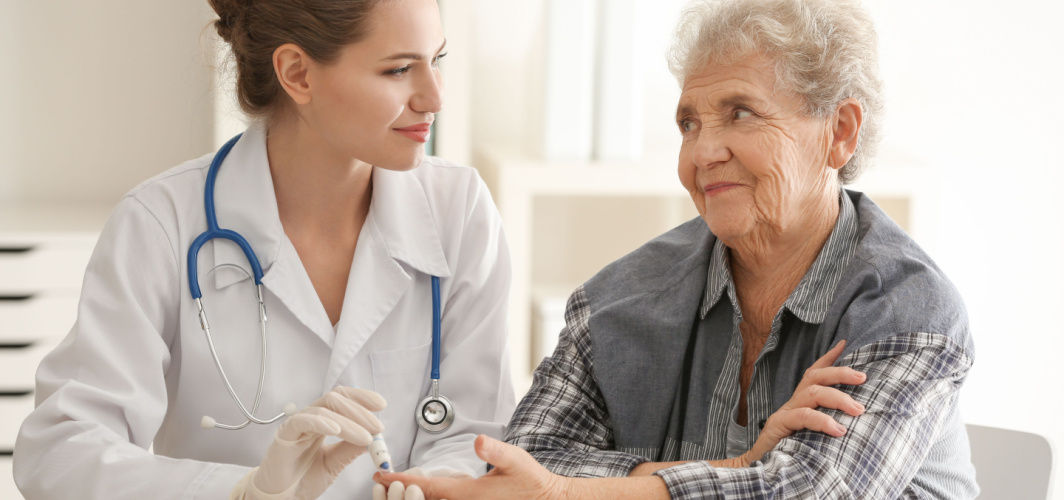General Health
Enlarged Adenoids: Causes, Symptoms and Remedies
3 min read
By Apollo 24/7, Published on - 27 September 2021, Updated on - 20 February 2023
Share this article
0
31 likes

Adenoids are small soft tissues present at the back of the nasal cavity, above the roof of the mouth (palate). Just like lymph nodes, adenoids are also a part of the immune system. White blood cells (the immune cells of the body) travel through the adenoids to fight off foreign microorganisms such as bacteria, viruses and parasites that try to cause infection.
Adenoids are present since birth and usually grow bigger during the age of 2 to 4 years. By the time children reach their teenage, adenoids disappear. Sometimes, the adenoids can grow larger due to an infection or idiopathically, causing discomfort to the child. Enlarged adenoids can block the nasal passage of the air, resulting in congestion, breathing difficulties, and other symptoms.
What are the symptoms of enlarged adenoids?
Some children may not develop any symptoms while others may suffer from breathing issues. Enlarged adenoids can result in common symptoms that include:
- Difficulty in breathing through the nose
- Noisy breathing
- Nasal voice
- Persistent nasal congestion
- Mouth breathing
- Snoring
- Breathing stops for a few seconds during sleep (sleep apnoea)
- Bad breath (Halitosis)
- Dry mouth
- Chapped or cracked lips
- Restlessness
- Frequent sinus or middle ear infections.
Recommended Read: How to Keep Ears Healthy and Prevent Infections
What causes the enlargement of adenoids?
Adenoids help the body prevent and fight infections by trapping bacteria, viruses and other harmful microorganisms, which can also cause them to swell. While mostly this swelling resolves on its own, sometimes these microorganisms may cause infection and inflammation of the adenoids, which is known as adenoiditis.
How are enlarged adenoids treated?
As the adenoids usually shrink and disappear by the teenage years, most children do not require any treatment for enlarged or infected adenoids. However, the doctor may prescribe some antibiotics and decongestants to provide symptomatic relief to the child.
In the case of persistent or severe breathing difficulty, obstructive sleep apnoea, sinusitis (inflammation of the sinus) or repeated middle ear infections, the doctor may recommend an adenoidectomy. Adenoidectomy involves the removal of inflamed adenoids and is often accompanied by the removal of tonsils, therefore it is also known as adenotonsillectomy.
Can enlarged adenoids be managed at home?
Children suffering from enlarged adenoids may develop respiratory infections, which can make it difficult for them to breathe through the nose. However, these symptoms can be managed at home with the help of some remedies which include:
- Saltwater gargles: It is one of the most commonly used home remedies to relieve inflammation, swelling, and pain associated with enlarged adenoids.
- Turmeric: Turmeric has curcumin, which is popular for its antioxidant, antibacterial, and anti-inflammatory properties. Consuming turmeric mixed with warm milk can help reduce inflammation and reduce pain.
- Garlic: Garlic contains sulfur compounds such as allicin, which has strong antibacterial and anti-inflammatory properties. These compounds can help treat throat infections by relieving inflammation. Garlic can be added to the regular diet of children. They can also be made to consume a clove of raw garlic early in the morning to reap the benefits.
- Holy basil: Holy basil, also known as tulsi, is believed to have antibacterial and anti-inflammatory properties, which can help reduce swelling of the adenoids. A cup of hot tulsi tea can help hasten the healing process while relieving congestion.
Conclusion
Adenoids can get enlarged due to an allergic reaction or a bacterial/viral infection. Children suffering from enlarged adenoids often experience breathing difficulties and are bound to breathe through the mouth even during the day. Many people with enlarged adenoids have few symptoms, thus they do not require any treatment. However, one must consult a doctor if the enlarged adenoids result in sleep apnoea or frequent middle ear infections in their children.
General Health
Leave Comment
Recommended for you

General Health
Diabetes Care On A Budget: 5 Effective Ways To Reduce Healthcare Costs
Discover lifestyle changes, affordable treatment options, and resources to help you save money while managing your diabetes

General Health
How to Dissolve Kidney Stones at Home?
Regardless of gender, any individual can develop kidney stones. Because of kidney stones, one can suffer from several symptoms that impact their daily lifestyle. In this blog, you can find home remedies that help you to dissolve kidney stones.

General Health
5 Things You Should Avoid After Waking Up
Things that you do in the morning can influence your body and mood for the rest of the day. We are bombarded with all kinds of distractions at the beginning of the day which makes it even more important to adopt healthy rituals and refrain from unhealthy ones.
Subscribe
Sign up for our free Health Library Daily Newsletter
Get doctor-approved health tips, news, and more.
Visual Stories

Could There Be More to Your Snore?
Tap to continue exploring
Recommended for you

General Health
Diabetes Care On A Budget: 5 Effective Ways To Reduce Healthcare Costs
Discover lifestyle changes, affordable treatment options, and resources to help you save money while managing your diabetes

General Health
How to Dissolve Kidney Stones at Home?
Regardless of gender, any individual can develop kidney stones. Because of kidney stones, one can suffer from several symptoms that impact their daily lifestyle. In this blog, you can find home remedies that help you to dissolve kidney stones.

General Health
5 Things You Should Avoid After Waking Up
Things that you do in the morning can influence your body and mood for the rest of the day. We are bombarded with all kinds of distractions at the beginning of the day which makes it even more important to adopt healthy rituals and refrain from unhealthy ones.